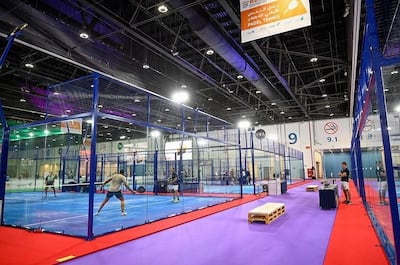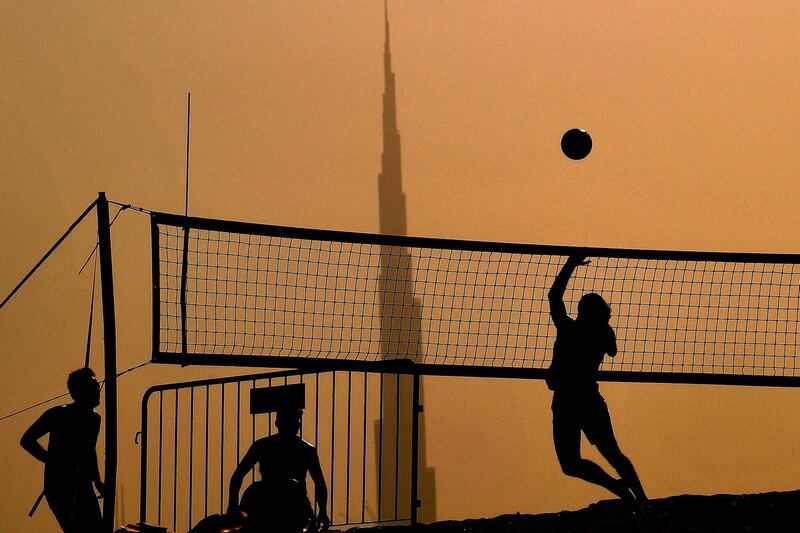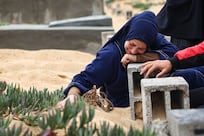One of the more prosaic claims about the UAE is that it empties out in the summer. According to conventional wisdom, every June witnesses a stampede of residents to the airports once the mercury starts nudging 40°C. Although there is little doubt that it gets hot at this time of year, it is also true that in a few decades the Emirates went from summers that were a matter of life and death to being – and hear me out on this – relatively comfortable.
One of the technologies that changed the Gulf forever is, of course, modern air conditioning. It turned life in the Arabian summer from a feat of human endurance into one where it is possible to do many daily tasks at a climate-controlled 21°C. It is arguable to say that the UAE these days is a year-round country where the idea of having a “dead” season from June to September is one that has lost ground.
I have seen a prime example of this lively Emirati summer over the past few weeks at Adnec in Abu Dhabi. From June 6 to August 20, the largest exhibition venue in the Middle East has been transformed into a gigantic gym and sports centre. Hundreds of men, women and children of all fitness levels use free exercise equipment and a running track to keep active. Others club together for an affordable game of cricket or five-a-side football. Many use Abu Dhabi Summer Sports’ facilities for a leisurely walk or to simply hang out. The assumption that it’s too hot to keep active during the UAE summer is one that is being challenged, bit by bit.

This year-round UAE can also be seen when it comes to tourism. Earlier this week, it was reported that Dubai tourism numbers exceeded pre-pandemic levels with a 20 per cent year-on-year increase. What’s more, among the international visitors that the emirate welcomed in the first half of the year, some had arrived in June. This means that at least a cohort of these 8.5 million travellers took a look at what Dubai had to offer in the summer heat and thought: “Sounds good.”
This is no fluke. Both Abu Dhabi and Dubai have invested in energetic summer tourism campaigns, which in previous years focused on staycations for citizens and residents and have since broadened into slick promotional campaigns aimed at enticing even more foreign visitors. These seem to be paying off. Indeed, I pass by many of these visitors every day at the large hotel complex that is beside The National’s Abu Dhabi offices. There is no air of “low season” here: porters are busy with luggage in the lobby, buses wait to take guests to the city’s attractions or the airport, and the hotel’s pool is always in use, especially in the mornings and evenings.
With the UAE being enviably located and well-connected to many countries in Asia and Europe, it should perhaps not be that surprising that people want to come here for their summer holidays. Indeed, it is not a stretch to imagine more visitors from Europe in particular deciding that if they are going to experience Gulf-like temperatures then they may as well do so in a safe and secure destination where everything from climate control to its traditional dress is geared towards living comfortably with intense sunshine and heat.
And although the Gulf has its occasional weather challenges in the summer – such as the recent storms fuelled by the shamal wind that hit parts of the country – these pale in comparison to the horrific wildfires that have caused so much misery across the Mediterranean recently. Truly, in some parts of the world summers can indeed be a matter of life and death.
None of this is to suggest that life goes on entirely as normal during the UAE summer. I’m not recommending, for example, that it’s a good idea to go sunbathing in the middle of an August day, and of course, things inevitably get a little quieter in some regards – many of the country’s foreign-born teachers, for example, use the summer as an opportunity to go home for a few months. Moreover, summer months the world over are quieter as schools break for the holidays and families travel.
Some issues posed by the high temperatures can be only managed, not overcome entirely. Many people work outside during the summer, and although there are measures in place to mitigate the worst of this – such as enforcing a mandatory break during the hottest hours, or providing air-conditioned rest areas – the summer Sun is undoubtedly still a serious business.
But as with many things in life, a little planning, adaptation and flexibility can go a long way. A good example of this is in Dubai where three beaches have been fitted with special lighting to encourage people to go swimming at night, providing a novel experience for residents and visitors alike. The fact is the UAE is the kind of country where it is possible to go skiing and ice skating in the scorching heat of the Arabian summer. See you next summer in the Emirates?





